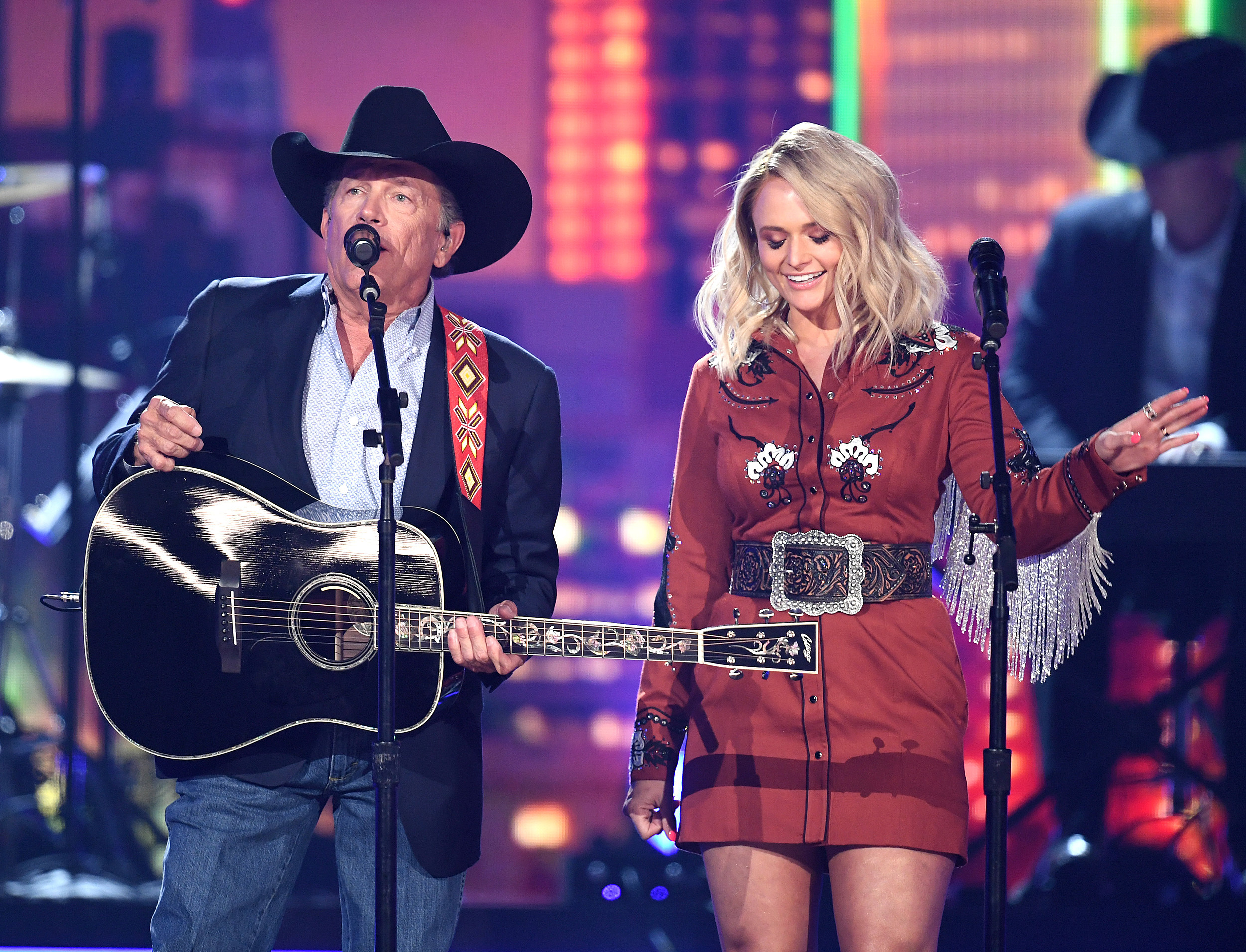“Think you can outrun me, Cowboy?” Miranda fired off with a grin sharp enough to cut the silence. George didn’t flinch. “Darlin’, I’ve been running this game longer than you’ve been raising hell.” And just like that, the first chords ripped through the stadium—not an introduction, but a declaration. The King and the Queen had arrived. Strait, the unshakable emblem of Western pride, stood steady while Miranda, a storm of rock-and-roll country fire, matched him note for note. When their voices collided on “Run” and “How ’Bout Them Cowgirls,” it wasn’t just a duet—it was an earthquake. The crowd shook the ground, boots flying, hearts pounding, as legacies fused into a single, unstoppable force of country music history.


In the hallowed halls of country music, there are performances, and then there are events. The latter is a rare convergence of talent, timing, and raw, unadulterated energy that doesn’t just entertain an audience—it baptizes them. This is what transpired the moment Country King George Strait and the Queen of Outlaw Heartache, Miranda Lambert, shared a stage. Their powerful duet pairing of Strait’s classic “How ‘Bout Them Cowgirls” with Lambert’s fiery “Run” wasn’t merely a setlist item; it was a masterclass in generational power, a fusion of western pride and rock-and-roll spirit that detonated on stage and left the entire crowd on their feet, boots stomping, and voices screaming in pure, unbridled joy.
From the first note, the contrast was everything. George Strait, the embodiment of stoic, timeless cool, stood as the unwavering anchor. His voice, as smooth and reliable as worn-in leather, paid homage to the strength and grace of the cowgirl spirit. He is the steady heartbeat of traditional country, the proud standard-bearer of the genre’s finest values.

Then, there was Miranda. She erupted onto her verse not as a guest, but as a force of nature. She is the living embodiment of the very cowgirl Strait was singing about—fearless, independent, and fueled by a rock-and-roll heart. Her voice, a potent blend of honey and grit, didn’t just complement Strait’s; it ignited a fire next to his calm flame. Together, they represented the full spectrum of country music: its respected past and its defiant, passionate present.

When they launched into “Run,” the energy shifted from respectful tribute to full-blown honky-tonk revival. This was the call to arms. The crowd, already electric, erupted. The description of “boots flying” is not an exaggeration; it’s a testament to the irresistible force of the rhythm. You couldn’t stand still if you tried. The pounding beat, the searing guitars, and the combined vocal power of two icons created a vortex of pure, cathartic energy.
This was more than a collaboration; it was a conversation across generations. Strait’s unwavering pride met Lambert’s unapologetic rebellion, and they found common ground in their shared Texas roots and a deep, abiding love for authentic country music. They weren’t performing *at* the audience; they were leading a rebellion against anything quiet, polite, or boring.
In that moment, they didn’t just sing songs. They unleashed a feeling. They provided the soundtrack for a thousand boot-stomping, heart-pounding, weight-of-the-world-shedding celebrations. It was a powerful reminder that at its best, country music isn’t just something you listen to—it’s something you feel in your bones. And together, George Strait and Miranda Lambert made sure every single person in that arena felt it.



